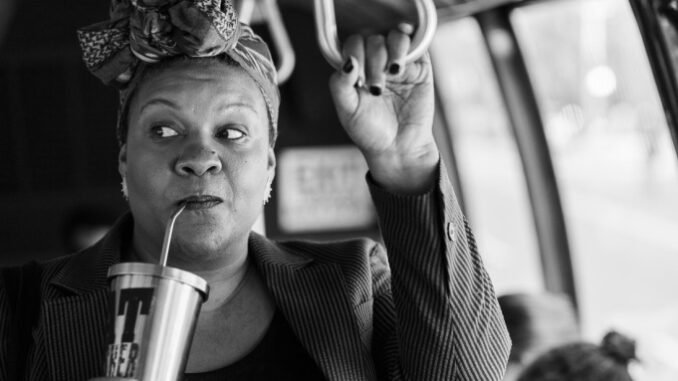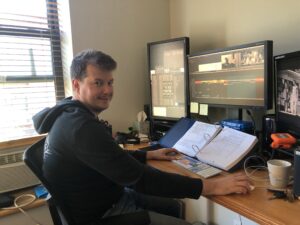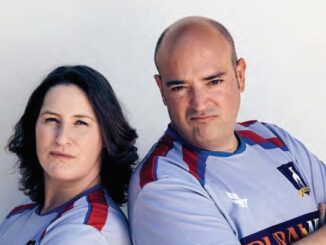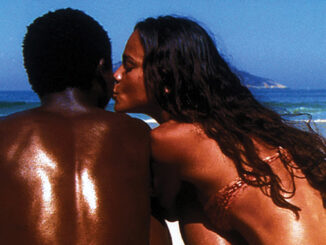
By Patrick Z. McGavin
A sensation at the Sundance Film festival in January, Radha Blank’s “The Forty-Year-Old Version” was a breakout platform for its director, producer, writer and star.
Blank captured the festival’s directing prize for her rapturous story about a struggling New York playwright who rejuvenates herself artistically as a rapper and spoken word artist.
Editor Robert Grigsby Wilson also achieved critical plaudits for putting it all together. Recently he talked with CineMontage about the challenges working in film and cutting this well-received comedy.
The movie is now available to watch on Netflix.
CineMontage: How did you get connected with this project?
Robert Grigsby Wilson: I met Radha in the summer of 2017 at the Sundance Labs. I was her editor while we were developing [a] project at the Directors Lab.
I am a WASP from outside of Boston, Massachusetts. I didn’t know her story as well as she did. I think where we connected was through our creative reference points and our taste. We also shared an affection for a Golden Age of hip-hop, comedy, independent filmmaking and visual aesthetics.
She wrote, directed and plays the lead role. Was your task bringing a different point of view to the material?
By the time we started, I already felt like I was aware of what she wanted. I knew her taste for long takes and pacing. I knew she was an adventurous filmmaker, and that empowered me to take some swings to see how she would feel about it.

Radha really values in her collaborators someone who can bring out her vision. I rarely played the role of final hurdle to clear. Usually I would whisper in her ear my ideas. I’d ask, “What are you looking for here?” I would turn around and try to accomplish my work in a way that (fused) with her energy and approach.
The movie is shot in beautiful 35mm, black-and-white film. What did that mean for your work?
It was a challenge. There are no labs in New York City anymore that process black-and-white film stock. The only lab on the East Coast was in Baltimore. Generally speaking, it took an average of about a week to have the film shipped, cleaned and scanned into a digital file.
Our on-set video assist would receive audio from on-set sound and capture a dirty soft image off the viewfinder of the camera, with burned-in 2:39 matte lines and crosshairs. He’d record those to ProRes Proxy files which Radha could use for on-set playback but also were sent to editorial, where we’d ingest these proxies and I’d edit with them.
I would do an entire assembly of the scene (sometimes multiple assemblies) and set it aside for my assistant Sam Salvodon to track and overcut, once the film dailies arrived.
We essentially needed to prep two sets of dailies for each day of shooting. We had to follow this workflow because of the turnaround time for our film dailies. We didn’t have the luxury of waiting. We also had to always go back and make sure all the film always came in. Fortunately we got through it, and we ran into almost minimal problems.
Aesthetically, is there anything tangibly different to working in film?
With digital video there is little grain. It’s a very clean image, and that will allow you to develop little tricks, like hiding a speed ramp. It was a brand new lesson to learn that some of my digital tricks I could usually deploy didn’t necessarily work because the film grain was so alive and responsive.
That was the curse, but the blessing is that you can do a lot more subtle things because the image is much more aesthetically forgiving. It’s a little dirtier, it’s a little bit more alive, so imperfections or dips into and out of focus really become more apparent. Your eye forgives a lot more of those imperfections.
The central relationship in the film is between Radha and her manager Archie (Peter Kim). How did the editing shape the rapport and jousting between them?
Peter Kim has been a part of this project for as long as I have known Radha. Peter’s the actor that Radha has known for the longest time. The character of Archie grew out of her friendship with Peter.
At the Sundance Labs, they sometimes bring out the actors and experiment with them. Peter performed the scenes with Radha. That allowed me to see them interact in a social setting as people. Seeing their dynamic in play doesn’t just come out of the casting process. It comes out of the real relationship they have formed. The dynamic is real, and has been practiced years before the cameras rolled. They never needed to practice to have that kind of relationship.
The story alternates between Radha’s interaction with her students, the production of her new play and her rebranding herself as a rapper. Was the greatest challenge bringing together these particular story blocks?
I have been involved not only since the Sundance Labs, but the previous iterations of the script, so the balance between different narratives is something we have been having a conversation about for a long time.
The story required some balance due to the way everything changes in going from the script to the screen. It required certain evaluations to make sure we were never losing any story, always keeping all the characters alive.
The majority of this is crediting Radha as a writer. We didn’t need to reinvent the trajectory of the film because her script was so good. Radha’s journey as a character is so well developed we never felt like we had to do much to elevate it.
It was about finding ways to enhance or keep characters alive. We spent time looking at her brother, we spent time looking at the city, looking at music or making sure we found subtle ways to tease things or make sure the audience doesn’t forget this other part we are experiencing.
I imagine getting comedy right is the hardest thing for an editor, with the timing so key.
I really enjoy comedy, and in some ways it really feels natural to me. I think the thing we always had to balance and be aware of was making sure we were never leaning into the comedy for the sake of making jokes and losing the emotional resonance or dramatic importance of a scene.
Radha is so funny, so filled with wit, she would sometimes decide the perfect moment for a scene. There were certain jokes she would just change without telling anybody because they just felt better to her in the moment.
It’s a comedy about a woman trying to reinvent herself. The comedy also allows you to take down the underlying social messages, about racism, sexism, creativity, representation. If we didn’t have the strong foundation, we might put the audience off. We could keep them close at hand because the laughs always keep the story alive.
How have you been able to make the leap from assistant to editor?
I studied at Emerson College, in Boston, and then made my way out to Los Angeles. I started through movie trailers, being a PA and then as an assistant editor. I went to New York almost a decade ago when my wife got an opportunity there.
That was a lucky transition because I established myself a little bit in Los Angeles. I was able to work my way into the network in New York. It’s a smaller network but still very vibrant, established and a top-tier community of editors. In some ways I really love it because it’s really tightly knit compared to LA.
There is a long journey that is sort of circuitous. It began as soon as I got to New York. My first opportunity of being an additional editor was on David Lowery’s film “Ain’t Them Bodies Saints” (2013).
I always really valued being an assistant because you get to see how editors work. You get to learn technical wizardry, and you learn how a film gets made. A lot of people want to skip the assistant process, skip the mentoring process, I think there’s incredible value I derived. On the flip side of that, I was always hesitant to sign up for the big job as an assistant because it would limit my abilities to get better as an editor.
Once I felt I had the foundation for how to run a cutting room, I tried to take as many opportunities as possible, knowing the pay would not be that good. I once asked (editor) Kevin Tent for his advice. He said, “Cut everything.”
I cut a lot of shorts, music videos. I cut Vice News. I cut documentaries, industrials, anything I could possibly find. I learned a lot from those experiences and how to fold them into my narrative film jobs, things I wouldn’t necessarily know had I not worked in different types of content.
What lessons are you going to take away from this film?
The year 2020 is a time when we are all going through a lot of changes and we are going through self-evaluation and reflecting on what our lives are like.
It sent chills down my spine when I heard Radha won the directing award at Sundance. I have started at the bottom. I have been a production assistant. I have gotten coffee for everybody. I have seen every side of post-production. There were a lot of times where I wasn’t sure I was ever going to amount to that much. The feelings of your own success ebb and flow, day to day. This is a gig business. There are always lows that follow the highs.
When I was stuck in an opportunity I didn’t want or felt like my career was not moving forward or when I was unemployed looking for the next thing, I always knew I was just a phone call away. As long as you always try to put one foot in front of the other and build incrementally, brick by brick, something will break.
Patrick Z. McGavin is a Chicago-based writer and cultural journalist.




